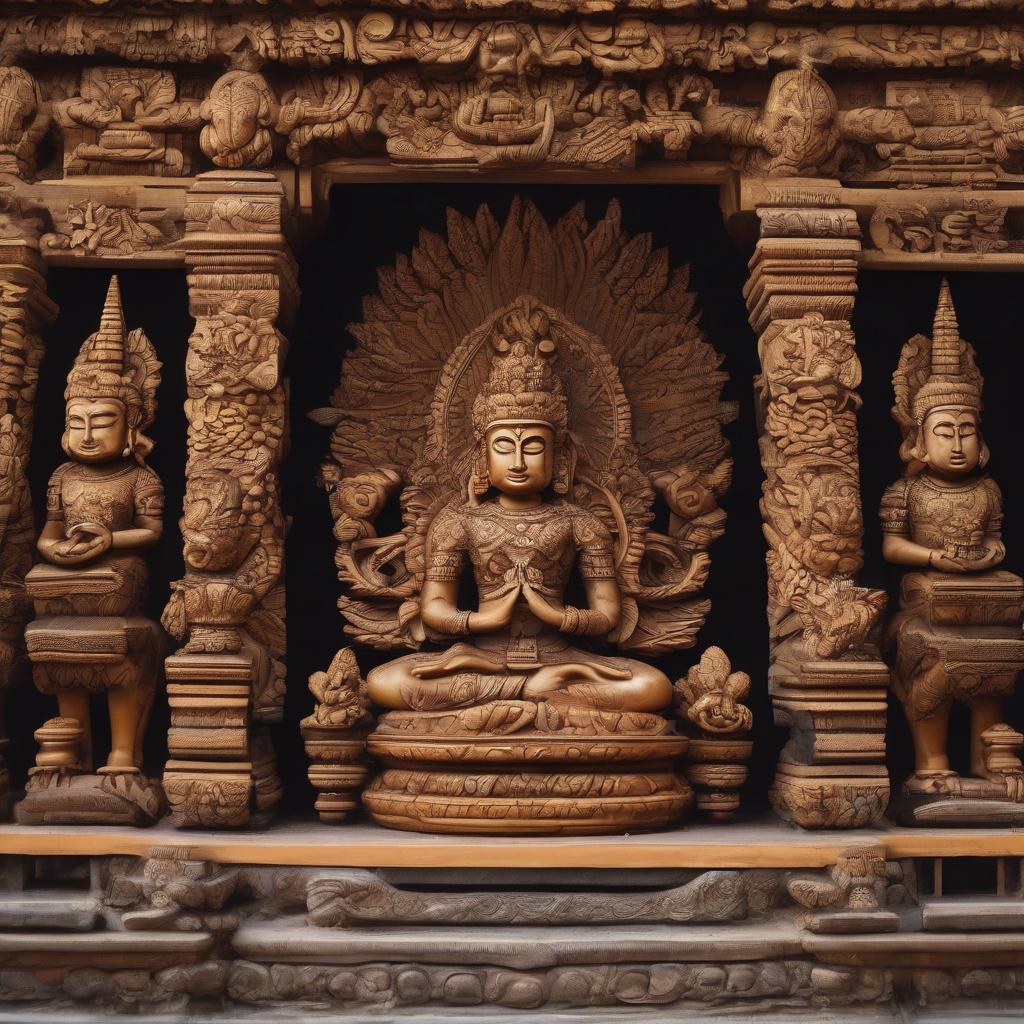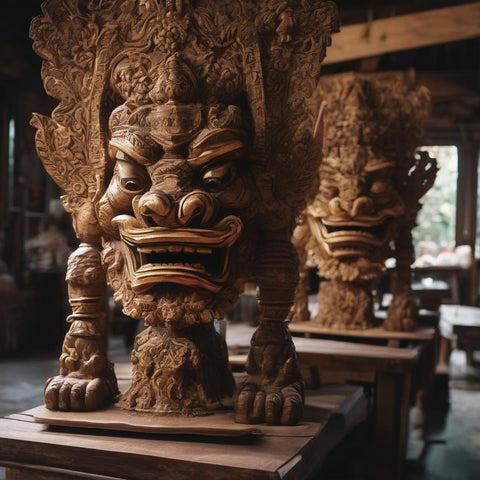
Preserving Tradition: The Art of Wood, Bone, and Horn Carving in Indonesia
Share
Wood, bone, and horn carving is an ancient art form deeply rooted in the cultural heritage of Indonesia. Passed down through generations, this traditional craft continues to captivate both locals and visitors alike with its intricate designs and rich symbolism. In this blog post, we delve into the art of wood, bone, and horn carving in Indonesia, exploring its history, significance, and how the new generation is infusing modernity into this age-old tradition to create stunning jewelry pieces.

A Glimpse into Indonesia's Carving Tradition
Indonesia's diverse cultural landscape is reflected in its wood, bone, and horn carving traditions. From the lush jungles of Bali to the tribal communities of Papua, each region boasts its unique carving style, motifs, and techniques. For centuries, artisans have honed their skills, transforming raw materials into exquisite works of art that tell stories of myth, legend, and spirituality.
Wood carving holds a special place in Indonesian culture, with artisans sculpting everything from intricate masks and statues to ornate furniture and architectural elements. Teak, mahogany, and ebony are among the preferred woods used for carving, prized for their durability and natural beauty.
Bone and horn carving, on the other hand, showcases the ingenuity of Indonesian artisans in utilizing animal by-products to create stunning pieces of jewelry, utensils, and decorative items. Buffalo and cow bones, as well as deer and goat horns, are meticulously carved and polished to reveal intricate patterns and motifs inspired by nature, mythology, and indigenous beliefs.

The Significance of Traditional Carving Art
In Indonesian culture, wood, bone, and horn carving transcend mere craftsmanship; they embody deep spiritual and cultural significance. Many carvings feature motifs inspired by Hindu epics, such as the Ramayana and Mahabharata, or traditional symbols representing fertility, protection, and prosperity. These carvings often adorn temples, palaces, and ceremonial objects, serving as tangible expressions of faith and tradition.
Moreover, wood, bone, and horn carvings play a vital role in preserving Indonesia's cultural heritage and identity. Through intricate designs and craftsmanship passed down through generations, artisans continue to uphold centuries-old traditions, ensuring that the stories and values embedded in their creations endure for future generations to appreciate and cherish.
Modern Interpretations: Crafting Jewelry with Heritage
While traditional wood, bone, and horn carving techniques remain central to Indonesian craftsmanship, the new generation of artisans is embracing innovation and modernity to breathe new life into this ancient art form. One notable trend is the incorporation of carved elements into contemporary jewelry designs.
Inspired by the rich cultural tapestry of Indonesia, young designers are fusing traditional carving techniques with modern aesthetics to create unique jewelry pieces that blend heritage with style. Necklaces, earrings, and bracelets adorned with intricately carved bone and horn pendants are gaining popularity both locally and internationally, serving as wearable works of art that pay homage to Indonesia's artisanal heritage.
By embracing their cultural roots and reinterpreting traditional motifs in a contemporary context, these artisans are not only preserving Indonesia's rich carving tradition but also fostering a renewed appreciation for the country's cultural heritage among younger generations and global audiences alike.

Conclusion
Wood, bone, and horn carving art in Indonesia is a testament to the country's rich cultural heritage and artistic ingenuity. From the majestic wood carvings adorning ancient temples to the intricately carved bone and horn jewelry worn by fashion-forward individuals, this age-old tradition continues to inspire and captivate people around the world.
As Indonesia embraces the challenges of modernization and globalization, the preservation of its traditional carving art serves as a powerful reminder of the importance of cultural heritage in an ever-changing world. Through the skillful hands of artisans and the creative vision of contemporary designers, the legacy of wood, bone, and horn carving in Indonesia lives on, bridging the gap between past and present, tradition and innovation.

1 commentaire
Como saber de donde y en que año aproximadamente fueron tallados estos barcos si son de malasia o indonesia, barco espiritual de hueso indonesio", “barco alma dayak” y "modelo de hueso tallado del sudeste asiático provablemente